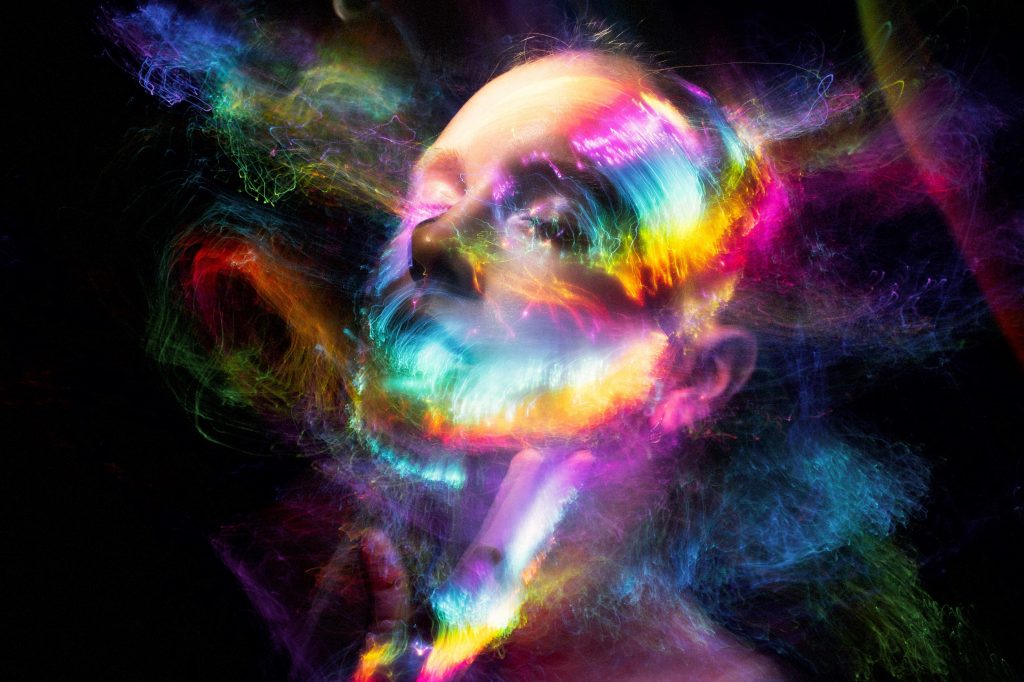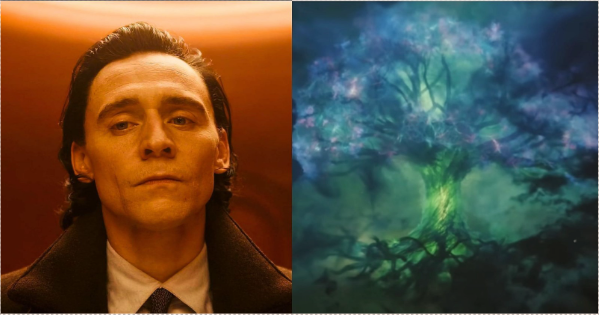
by Tom Delahunt (Senior Lecturer, School of Nursing) & Charlotte Grainger (SDHRC)
Tom: In the complex weave of societal expectations and invisible struggles, those of us with hidden disabilities often find ourselves navigating through a landscape of misunderstanding and isolation. This blog, co-authored with Charlotte Grainger, a wonderfully creative researcher at the Sidney De Haan Research Centre for Arts and Health, aims to explore the dissociation felt by those with hidden disabilities and the importance of creating spaces of psychological safety.
Our collaboration draws inspiration from Antonovsky’s ideas around connectedness and disconnection, and the quantum multiverses explored in the series Loki. Through this narrative, we aim to frame our experiences and insights, finding connection through disconnection, and advocating for a more inclusive society.
When Charlotte first mentioned her hidden disability, I felt an immediate sense of protectiveness, likely stemming from my own lived experiences. Hidden disabilities encompass a wide range of conditions that are not immediately visible to others; chronic pain, mental health disorders, neurological conditions, and so on. Unlike visible disabilities, these conditions often do not garner immediate empathy or understanding. This invisibility leads to a unique form of dissociation and isolation.
Drawing from Antonovsky’s concept of salutogenesis, which emphasises factors that support human health and wellbeing, we can see how societal patterns often favour the visible and easily understood. Those of us with hidden disabilities are frequently left explaining, justifying, and validating our experiences to a society that is quick to judge and slow to understand. This societal disconnect creates a heavy burden, leading to profound feelings of isolation.

Credit: Marvel Netflix.
In the series Loki, the central character navigates multiple universes, encountering different versions of himself. Through these encounters, Loki finds connection in disconnection; an understanding that transcends the physical realm. This concept resonates deeply with my experience. The disconnection we feel due to our hidden disabilities can become a source of connection and strength when we find others who understand our struggles.
____________________________________________________________________________
Charlotte: Ironically, I am deeply connected to the experience of disconnection. Heavily influenced by my hidden disability of depersonalisation – derealisation disorder (DPDR); a dissociative disorder defined by the Cleveland Clinic as a “disconnection from yourself and the world around you”, I exist in a perpetual paradoxical awareness of my own mental state. This paradoxical engagement of somehow managing to feel connected within my disconnect is a psychological phenomenon rooted in meta-awareness and identity integration.
Navigating life through a fragmented sense of identity and reality has made for a very isolating existence, exemplified by the outwardly ‘hidden’ nature of DPDR. This is why it is vital for me to form genuine connections that will positively impact my health and wellbeing and provide a sense of belonging that my dissociation deprives me of. However, society fears what it doesn’t understand, and for lesser-known conditions like DPDR, misconceptions and stereotyping often lead to a sensationalised view of mental health disorders and hidden disabilities. This lack of understanding and social friction further decreases the voices of individuals who often need to be heard the most, and with disorders such as DPDR, increases the sensations and feelings of dissociation.
Using the arts as a form of self-expression has provided a tangible connection to my internal state and offers a lifeline, that I know Tom and other creatives will recognise, understand, and acknowledge. Engaging in creative practice, whether individually or collaboratively, allows for an unspoken truth and authenticity to run deep within the veins, nurturing connections in which I am forever chasing.
This draws on Buber’s philosophy of dialogue and his “I and Thou” theory, where acknowledging one another’s humanity and existence with the space to share and engage, are fundamental in forming true connection. This outlet continues to drive my desire for societal change and understanding. In exposing hidden disability through the arts, we can create something that opens dialogues around knowledge exchange, sharing, and connection, and in turn, begin to cultivate a space for psychological safety.
Expanding further on Tom’s reflections on Antonovsy’s work of salutogenesis; his ideas surrounding connection and disconnection centre around his theory of “sense of coherence” within this framework. This is fundamentally based on the feeling of connectedness, built around comprehensibility, manageability, and meaningfulness. Applying this theory to the experiences of those with hidden disabilities can be helpful in supporting greater outcomes and resilience for such individuals like Tom and I, and promote a more connected society.
Through advocacy, individuals with hidden disabilities can support and connect with others who share similar experiences, aiding empowerment, agency, and validation. Due to the complex interplay between hidden disabilities and social connection, those without disabilities remain crucial advocates in helping to create a more inclusive and understanding society that values and supports everyone. It is only then, through this open and honest dialogue, can we start to promote strategies for inclusivity, policy changes, education, and training programmes to help nurture human connection and psychological safety and lessen the disconnect felt by individuals with hidden disabilities.
____________________________________________________________________________
Tom: Creating spaces of psychological safety is crucial for those of us with hidden disabilities. Psychological safety refers to an environment where people feel secure enough to express their true selves without fear of negative consequences. For Charlotte and me, and many others like us, the absence of such safety can stifle creativity, hinder academic progress, and exacerbate the challenges associated with our disabilities.
Our collaboration on this blog is a testament to the power of connection through disconnection. By sharing our stories and insights, we hope to raise awareness about the unique challenges faced by those with hidden disabilities and advocate for a more inclusive society. This involves promoting policy changes within academic and professional settings, and building supportive communities where individuals feel safe to share their experiences.
Charlotte’s journey is a testament to the resilience and creativity that can flourish when psychological safety is prioritised. As she embarks upon her PhD, our goal is to ensure that she, and others like her, have the support they need to thrive.
Recent advancements in quantum physics, such as the real-time entanglement of two photons observed in the “Quantum Yin-Yang” experiment, further illustrate the intertwined nature of seemingly disconnected entities. This phenomenon, where two particles become linked and instantaneously affect each other regardless of distance, resonates deeply with our theme of connection through disconnection. The image of the Quantum Yin-Yang symbolizes a fundamental truth in both physics and human experience: profound connections can exist even when not immediately visible or understood.

The intertwining of quantum physics and creativity highlights a deep-seated relationship between scientific inquiry and humanist philosophy. Both realms explore the limits of understanding and the nature of reality, whether through the lens of particles and waves or through the stories and connections we share. This quantum perspective enriches our appreciation of hidden disabilities, underscoring that the invisible can indeed have significant and far-reaching impacts. Just as entangled photons interact in unseen but powerful ways, our hidden disabilities shape our lives and connections in profound manners.
In conclusion, the dissociation experienced by those with hidden disabilities is a significant yet often overlooked issue. By acknowledging and addressing this, we can begin to create a society that values psychological safety and inclusivity. Let us embrace the stories of those with hidden disabilities, ensuring they are seen, heard, and supported in their journey.
____________________________________________________________________________
References and Further Reading:
Aaron Antonovsky and Salutogenesis and his theory of Sense of Coherence:
- Antonovsky, A. (1987). “Unraveling The Mystery of Health: How People Manage Stress and Stay Well”. Jossey-Bass Publishers. Link to book
- Antonovsky, A. (1996). “The salutogenic model as a theory to guide health promotion”. Health Promotion International, 11(1), 11-18. Link to article
Martin Buber and his I and Thou Theory:
- Buber, M. (1937). I and Thou. (W. Kaufmann, Trans.). New York: Charles Scribner’s Sons. (Original work published 1923).
To read about DPDR in more detail:
Marvel’s Loki:
- Disney+. “Loki”. Available on Disney+
- Marvel.com. “Loki (TV Series)”. Link to series information
Quantum Yin-Yang Experiment:
- Live Science. “Quantum Yin-Yang Shows Two Photons Being Entangled in Real-Time”. Link to article
These resources provide a deeper understanding of the concepts discussed and the inspiration behind our collaborative exploration of hidden disabilities and societal disconnection.
_____________________________________________________________________________
 Sidney De Haan Research Centre for Arts and Health
Sidney De Haan Research Centre for Arts and Health Charlotte Grainger
Charlotte Grainger
 1057
1057

